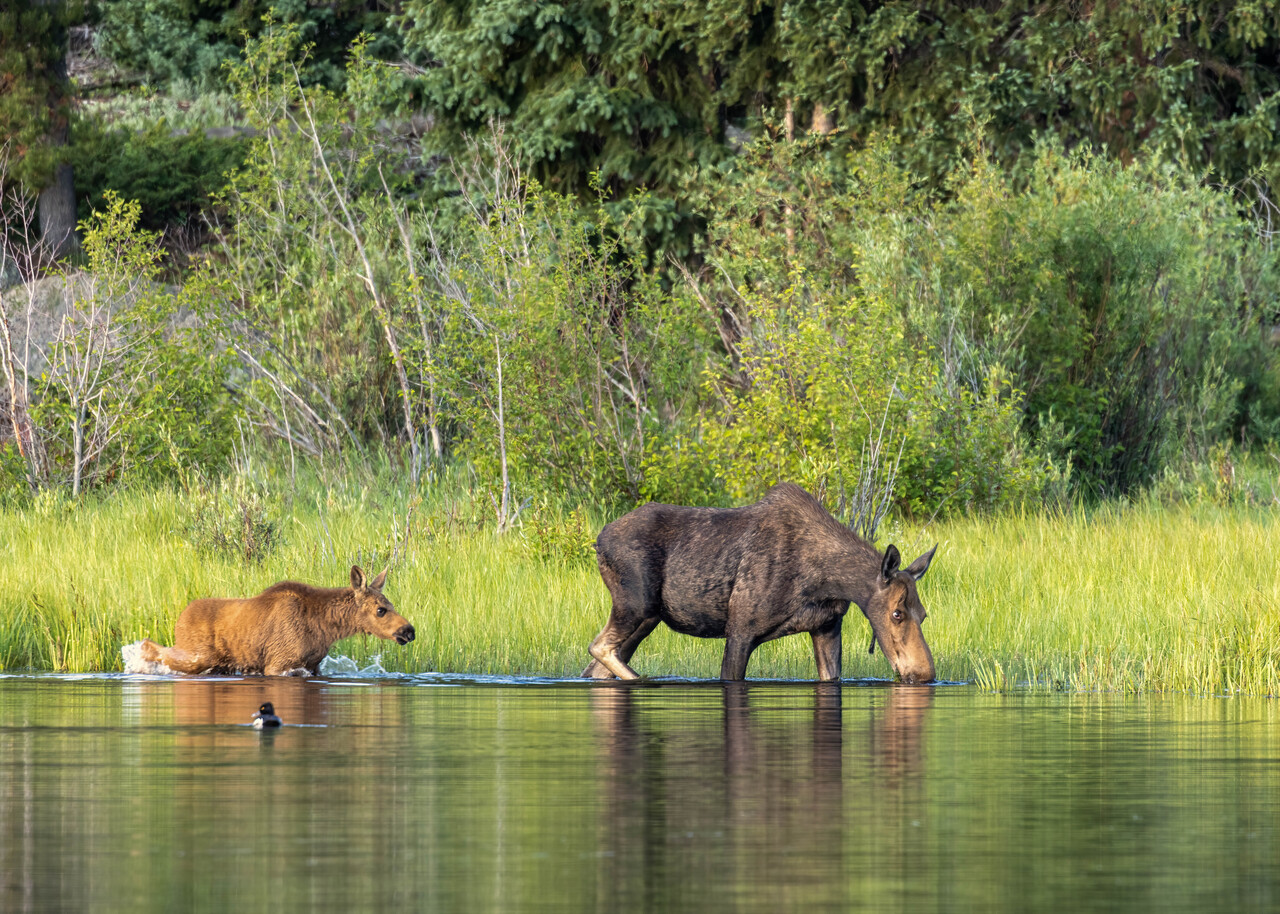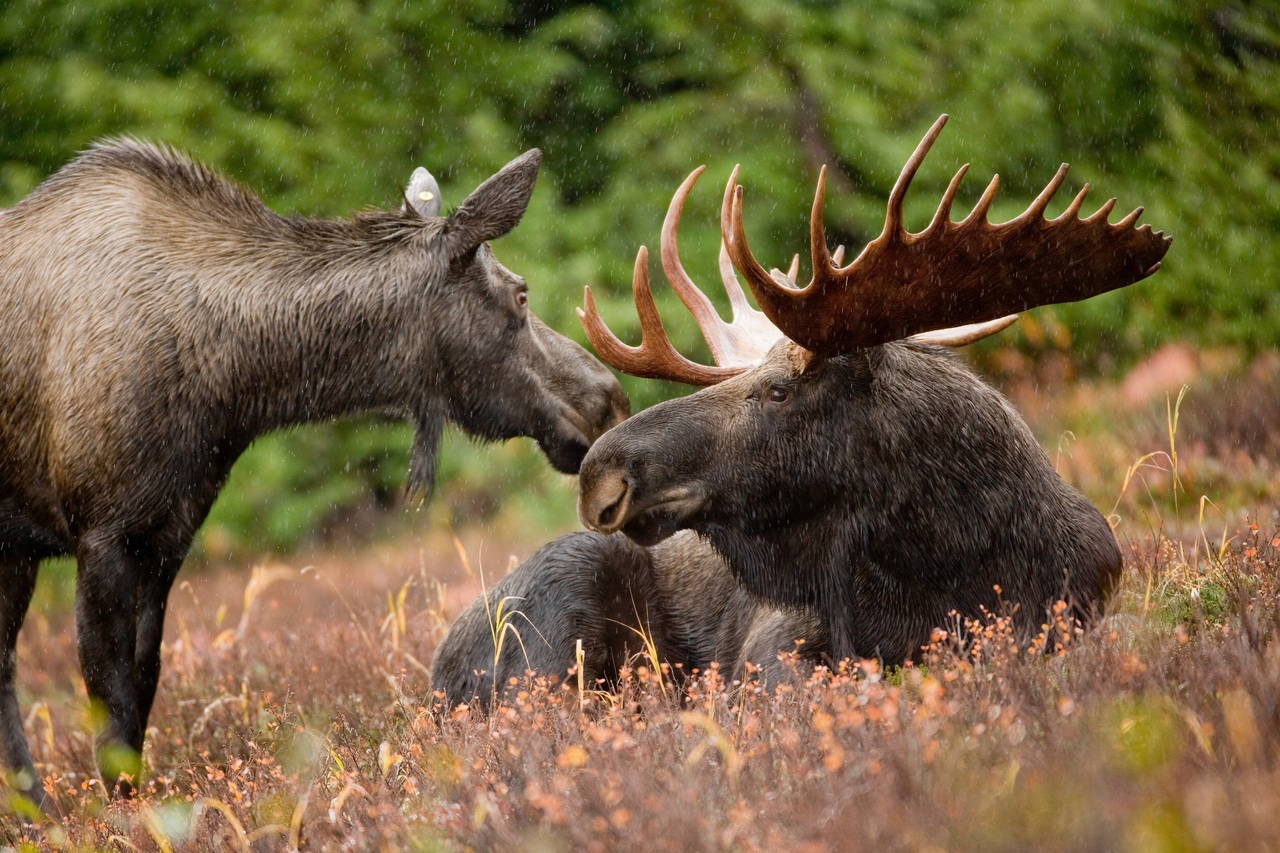Moose: The majestic giants of the Northeastern American Mixed Forests
- Nature Conservation
- Land Conservation
- Iconic Species
- Mammals
- Wildlife
- Northeast American Forests
- Northern America Realm
One Earth’s “Species of the Week” series highlights an iconic species that represents the unique biogeography of each of the 185 bioregions of the Earth.
The Iconic Species of the Northeastern American Mixed Forests Bioregion (NA10) is the Moose (Alces alces). Bulls can weigh up to 1,200 pounds and measure 6 feet high, while cows weigh between 500 and 800 pounds and are smaller in size. Ranging in solo or small herds within old-growth forests or small open areas and wetlands, this is the largest member of the deer family (Cervidae).
Pronounced Mooz in Ojibwe and similarly in other Algonquian languages, these forest dwellers established a close relationship with Native American hunters. It is believed that this is because, ever since the beginning, the tobacco pipe has been shared with the moose people, and there is always one that chooses to smoke it. When this happens, there is trust that the hunter who shared the pipe will treat the moose with respect and dignity and that it will be worth dying in his hands when the time comes.

Moose. Image credit: Courtesy of Michael Levine-Clark
The moose loves browsing leaves, twigs, buds, hardwood and softwood of willows, birches, maples, balsam fir, viburnums, aspen, and mountain ash, and when summer comes, they feed off aquatic plants in wetlands, streams, and ponds. An adult's daily intake is 40-60 pounds, although from the end of September to early October, they are busy breeding and don’t focus on browsing. Bulls and cows enter winter feeding heavily on the bark of young trees–mostly maple and aspen–and bulls drop their antlers during the winter as an energy conservation strategy. When spring comes back, antlers begin to regrow, emulating the budding of new leaves on the branches of trees.

Moose. Image credit: Courtesy of Grand Teton
Those two times of the year are typical to all Cervidae, including the White Tailed deer in southern Mexico, whose most prominent performance was marked on the Maya calendar as Sip. This term alludes to the heat and rut season (from September 22 to October 11) and as Keej, which means ‘deer’ in Yucatec, and it occurs at the onset of Spring, from March 21 to April 9. This shows how natural cycles have been observed by humans for millennia.
The moose is an important indicator of the health of an ecoregion, and efforts to monitor its population in the wild continue to be necessary. Some states fully dedicated to this purpose are Minnesota and New York.
Explore Earth's Bioregions.jpg?auto=compress%2Cformat&w=1440)

